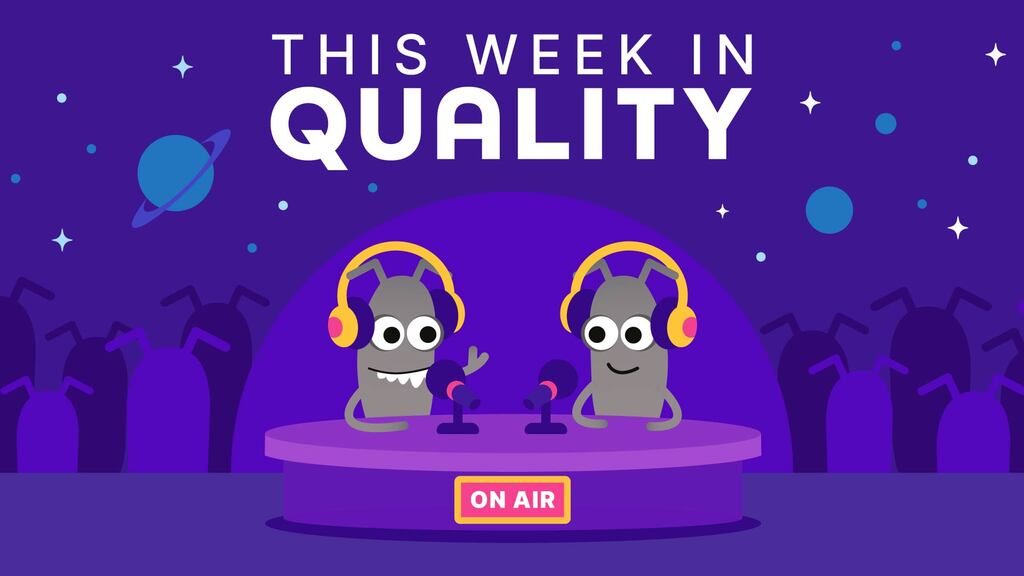By Andrea Jensen
Let me tell you a story about a tiny tool that saved the day.
A while back, I was testing one of those issues whose root cause simply wouldn’t come to light. And of course the software worked just fine on the developer’s machine but not on my testing laptop. Finally, after a couple of hours debugging, numerous phone calls, and being close to the edge of desperation...we found the root cause!
As it turned out, the problem had to do with a simple line in a configuration file. Complicating the effort: legacy code, a vast number of customer specific details, and some historical factors we could not change in a heartbeat.
After the problem was fixed, the developer who worked with me on the root cause sent me an executable file they had created. The executable had one purpose: allow the user to change the registration key and test the software for a “different user.” That may sound like a very simple solution, but for the team it was a total game changer.
I’ve consistently found tiny tools to be helpful way beyond their supposed scope of usage. In this article I’ll share a few examples.
Tools Large And Small
There is no lack of comprehensive software testing platforms. Their use cases include test management, API testing, automation, and many more. Many of these tools are extremely helpful to testers, and let’s face it, as IT professionals we are quite fond of our tools… and at times it seems like “the bigger the better.”
However, remember the story I told about the tiny executable that made all the difference. Often, these seemingly insignificant programs, frequently created in-house and never released to production, are the ones that have saved me the most time and effort in testing.
But if we’re honest, we tend to brag about our new shiny robotic lawn mower more than we do about the new screwdriver that cost only a couple of dollars.
I would like to celebrate the tiny tools, the little helpers. They support my testing, helping me to do particular tasks easier, faster, more efficiently. And they can make the daily hustle and bustle more joyful. For the Ministry of Testing’s ‘30 Days of Tools,’ here’s an homage to these unsung heroes.
In this piece I use the phrase ‘tiny tool’ for software with these characteristics:
-
They are created to serve a single purpose
-
They can be easily installed or run as a web app
-
You learn how to use them by doing: they don’t require hours of reading or watching training material
-
They are often free of cost
Screen And Video Capture
In most testers’ toolboxes you’ll find a screen and video capture tool. Sometimes a simple screenshot will tell the whole story, but sometimes a picture has its limitations. In those cases, I like to record a video or create an animated image to showcase the behavior, and these can generally be attached to defect reports in most modern bug reporting software.
My personal favorite tool for capturing and editing screenshots and screen recordings is the commercial tool Snagit. If you are on a low budget, freeware like Greenshot is available, too. ScreenToGif is a very recent addition to my toolbox, but I am already sending out animated GIFs to my teammates every other day. Why not just create videos? Instead of having to upload and download video files from bug reports, the animated GIFs go right into the report’s description, where anyone who opens the report can start watching it right away.
Test and Defect Reports
I have a couple of favorite tools for reporting on exploratory non-scripted testing.
I am a big fan of using mind maps to structure my testing, note down test ideas, keep track of the current state of the software, and report overall results. A mind map can be set up in almost no time and can be adapted when changes arise and to the needs of the team, software or project. At the moment, Mindmup 2.0 is my favorite, since it integrates nicely with Google Drive and supports collaboration in real time. It's fun to use and is great for information sharing among the team.
I also like to capture single exploratory testing sessions. Mind maps are useful in this case, but I find exploratory testing session recorders even more convenient. My tool of choice at the moment is Xray Exploratory Testing App. With Xray, while I am running the test session, I can capture notes, annotated screenshots, and even create videos. Everything is in the session document, which I can share later on with the team or even the customer. Often the results of these sessions spark valuable and meaningful conversations about the software. Quite a big impact for a small tool.
User Interface Testing
When the team is working on new modules or features which include new user interface designs the requirements will come with mockups from a designer. To validate that the UI implementation matches, I like to use tools like a color picker and a screen ruler.
As I started to learn more about accessibility I came across tools to check color contrast. These tools not only support creating more accessible software, but also help to channel the feedback on the UI design more directly. Telling the team that the contrast ratio should be at least 4.5 to meet accessibility standards gets much more attention and respect than simply saying “there’s not enough contrast.” I use a contrast checker mostly when testing mockups or new implementations of mockups.
I like to use Contrast Checker since it includes by default various design rules from the WCAG. For people like me who are new to accessibility testing, this is excellent support.
Tools For Internal Use Only
The executable I mentioned at the beginning is not the only mighty tiny tool that our developers have created for internal use. We also have a Slack bot that can be used by everyone in our office to search in our production databases, instead of creating a database query. Before the bot it was quite a fuss to find the correct entry and it was not accessible to all of us. Now, all we have to do is to enter the (sub)string in Slack and a list of all occurrences in all available databases will quickly appear.
It is great to have such tools at hands to ease the work and it is even greater to work with peers that see the trouble and solve it with a tiny tool.
Just For Fun
Warning: using tiny tools can lead to joy! A favorite tool can simply bring some light to the day.
For me, the Meme Generator helps to deal with the ups and downs of the tech industry, spread some laughter among your team, start off a presentation in a lighthearted way, or (very carefully) as a way to open the door to conversations about controversial topics.
To Sum Up
These are only a few of my favorite tiny tools for testing (and more).
You might have thought of a few of your favorite tiny tools while you were reading. What are they? Do you have any internal tools that make your life easier? If so, consider thanking the colleague who created them (and letting their manager know how much you appreciate the effort).
Further Reading
Fifteen Free Tools to Help With Testing, Kristin Jackvony
100+ Best Software Testing Tools Reviewed, Tricentis
Share your favourite tool and explain why – 30 Days of Tools, Day 1, Ministry of Testing
Author Bio
Hi, I’m Andrea! A tester since 2011, what started unplanned by chance I now continue out of passion. Currently, I am a Software Quality Engineer in the maritime industry by day. And a reader, crafter, curious learner and RiskStorming Online advocate by night. You can find me on LinkedIn or Twitter.





